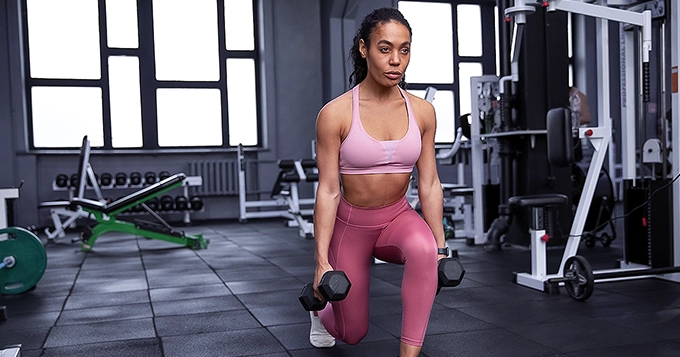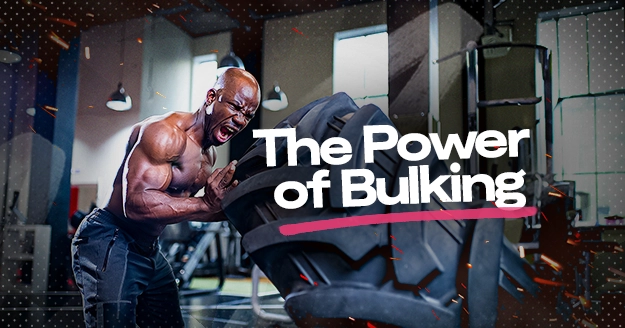Have you seen hundreds of “before and after booty workout” photos on social media? Have you ever wondered about the efficiency and effectiveness of your workouts in achieving those glute goals?
Many fitness enthusiasts, both beginners and seasoned gym-goers, seek to understand the impact of their exercise routines on the growth of their glute muscles. Let’s delve into the science behind it to see how workouts can transform your glutes.
But before embarking on a workout regimen for your glute transformation, it’s crucial to understand their anatomy and how they function. Your glutes consist of three primary muscles: the gluteus maximus, gluteus medius, and gluteus minimus.
- Gluteus Maximus
The gluteus maximus, your biggest butt muscle, defines your backside and gives it shape. It’s like a strong foundation from your hips to your thighs, providing support and curves.
Functionally, the gluteus maximus powers movements like standing, climbing stairs, and running. It keeps you stable and balanced, helping you maintain good posture while you move. Neglecting its strength can compromise your alignment, leading to discomfort or injury.
- Gluteus Medius
The gluteus medius, the second largest of your butt muscles, plays a vital role in keeping you balanced and steady. “It stabilizes your pelvis to prevent wobbling, whether you’re walking, jogging, or balancing on one foot.
Additionally, it helps your leg move gracefully away from your body in a motion called hip abduction. So, when you’re doing side leg lifts during a workout, remember to thank your gluteus medius for its strong support!
- Gluteus Minimus
The gluteus minimus, the smallest of the trio of butt muscles, lies beneath the larger gluteus maximus and medius, like the inner layers of an onion.
Even though it’s not as noticeable as its bigger counterparts, the gluteus minimus deserves recognition for its important role.
Like the gluteus medius, this muscle maintains pelvic stability during movement, ensuring balance and preventing excessive tilting when walking, running, or standing on one leg. It also assists in hip abduction, lifting your leg to the side, and assists in rotating your thigh inward, adding to the intricate dance of your body’s movements.
Why are Glute Exercises Important?
- Reduce back pain
Your gluteal muscles play a crucial role in extending your hips and aiding in the opposite movement. Picture them as the powerhouse behind actions like lifting your chest off the ground during exercises like deadlifts. Ensuring your gluteals are strong is vital for maintaining a healthy lower back, as they support various movements involving the pelvis, hips, and trunk. Moreover, they play a key role in evenly distributing weight across your lower back and legs, contributing to better posture and overall stability.
- Reduce knee pain
Your gluteal muscles play a vital role in stabilizing your pelvis, especially during weight-bearing activities. Instabilities in the hip can lead to issues like excessive pressure on the knee and ankle, potentially causing discomfort or pain. This imbalance may result in conditions like lateral patellar tracking, a common source of knee pain for many individuals.
- Increase power and exercise performance
Your gluteal muscles contribute to propelling you forward when you run by generating powerful hip extension. They play a crucial role not just in running, but also in activities like accelerating, jumping, and lifting heavy objects. If your gluteal muscles become weak, you might notice a decrease in your overall power and efficiency.
Benefits of Training Your Glutes
Your gluteal muscles are crucial for both strength and aesthetics. Lots of people want bigger butts because they think it looks good. But ignoring these muscles can cause big problems. You need to keep them working, or else you might face a serious issue that could hurt your butt.
Gluteal amnesia, or ‘dead butt syndrome,’ despite its humorous name, poses a real issue for individuals who sit excessively without engaging their muscles. When these muscles don’t get used, it can mess up your posture, change how you walk, and even cause pain in your lower back and knees because other muscles have to work harder to make up for the inactive butt muscles.
Tips to Grow Your Glutes Faster
- Train Your Glutes with Heavy Loads
If you don’t incorporate heavy lifting into your training regimen, you might not fully engage all the muscle fibers in your glutes, potentially limiting their overall development.
Including heavy weights, typically in the 5 to 10 rep range, in your glute workouts can enhance glute strength and activate more of the fast-twitch muscle fibers. These heavier loads are particularly effective in stimulating growth in these fast-twitch fibers, which are essential for muscle power and explosive movements.
- Do High Reps and Short Rest Periods Too
Similar to the importance of training with heavy weights, it’s also beneficial to incorporate higher rep ranges, aiming for near failure or failure during your workouts.
Training in the range of 15-30 reps with shorter rest periods of 30-60 seconds can be highly effective, especially when focusing on exercises that specifically target the glutes and allow for a strong mind-muscle connection. This approach helps to exhaust the muscles, promoting greater muscle growth and enhancing the effectiveness of your glute training routine.
- Progressive Overload
Following the principles of consistency and progressive overload is essential. Gradually increasing your workouts’ intensity, volume, or resistance challenges your muscles. This prompts them to adapt and strengthen.
- Proper Nutrition
What foods should you eat for glute exercises before and after?
Before and after booty workout, consume a balanced meal or snack with carbohydrates and protein, such as whole grains with lean protein or fruit with Greek yogurt. Afterwards, refuel with a similar combination to support muscle recovery.
To maximize glute growth before and after your workout sessions, stay hydrated with water and consider electrolyte-rich beverages for intense workouts or hot conditions.
Genetics also influence gluteal shape and size, but targeted exercises can significantly enhance their appearance and strength.
Best Exercises for Growing Your Glutes
- Glute bridge
- Starting: Lie on your back. Then, bend your knees. Keep your feet flat on the floor and your arms by your sides.
- Lift Hips: Push through heels, raising hips toward the ceiling until a straight line is formed form your shoulders to your knees.
- Squeeze Glutes: Hold for a moment at the top, squeezing your glutes.
- Lower: Lower hips back down with control.
- Breathing: Inhale as you lower, exhale as you lift.
- Jumping squats
- Starting: Stand with feet shoulder-width apart, core engaged.
- Squat: Lower into a squat, thighs parallel to the ground, keeping weight on heels.
- Jump: Explosively jump up, extending hips, knees, and ankles fully.
- Land: Land softly on the balls of your feet, immediately transitioning into the next squat.
- Repeat: Continue the squat-jump sequence for desired reps
- Breathing: Inhale on the way down, exhale forcefully on the jump.
- Safety: Maintain control, avoid excessive lean, and land softly to reduce impact.
- Walking lunge with weights
- Hold Weights: Grab dumbbells or kettlebells, one in each hand. Stand with your feet hip-width apart.
- Step Forward: Take a large step forward with your right foot, landing on your heel first. Your left foot stays in place behind you.
- Lowering Phase: Lower your body straight down by bending both of your knees until your front thigh is parallel to the floor with your back knee just above the ground. Maintain an upright torso throughout the movement.
- Push Back: Push off with your front foot to stand back up, then bring your back foot forward.
- Alternate Legs: Repeat the lunge with your left leg. Continue alternating your legs as you walk forward.
- Single-leg deadlift
- Starting: Stand on one leg with a slight bend in the knee, the other leg lifted slightly behind you.
- Hinge Forward: Keep your back straight, hinge at hips, and lower your upper body towards the ground as you raise your free leg behind.
- Reach Down: Lower until the torso is parallel to the ground, reaching towards the ground with the opposite hand.
- Return Up: Engage glutes and hamstrings to lift the torso back to the starting position.
- Breathing: Inhale as you hinge forward, exhale as you return up.
- Barbell hip thrust
- Setup: Sit with your upper back against a bench, with a barbell across your hips.
- Position: Feet hip-width apart, knees bent.
- Lift: Drive through heels, and lift hips until the body forms a straight line. Squeeze glutes at the top.
- Lower: Lower hips back down with control.
- Breathing: Inhale down, exhale up.
Glute Exercises Before and After Reminder: Stretching and properly warming up are important to maximize effectiveness and reduce the risk of injury. After you finish your exercises, make sure to cool down for effective recovery.













